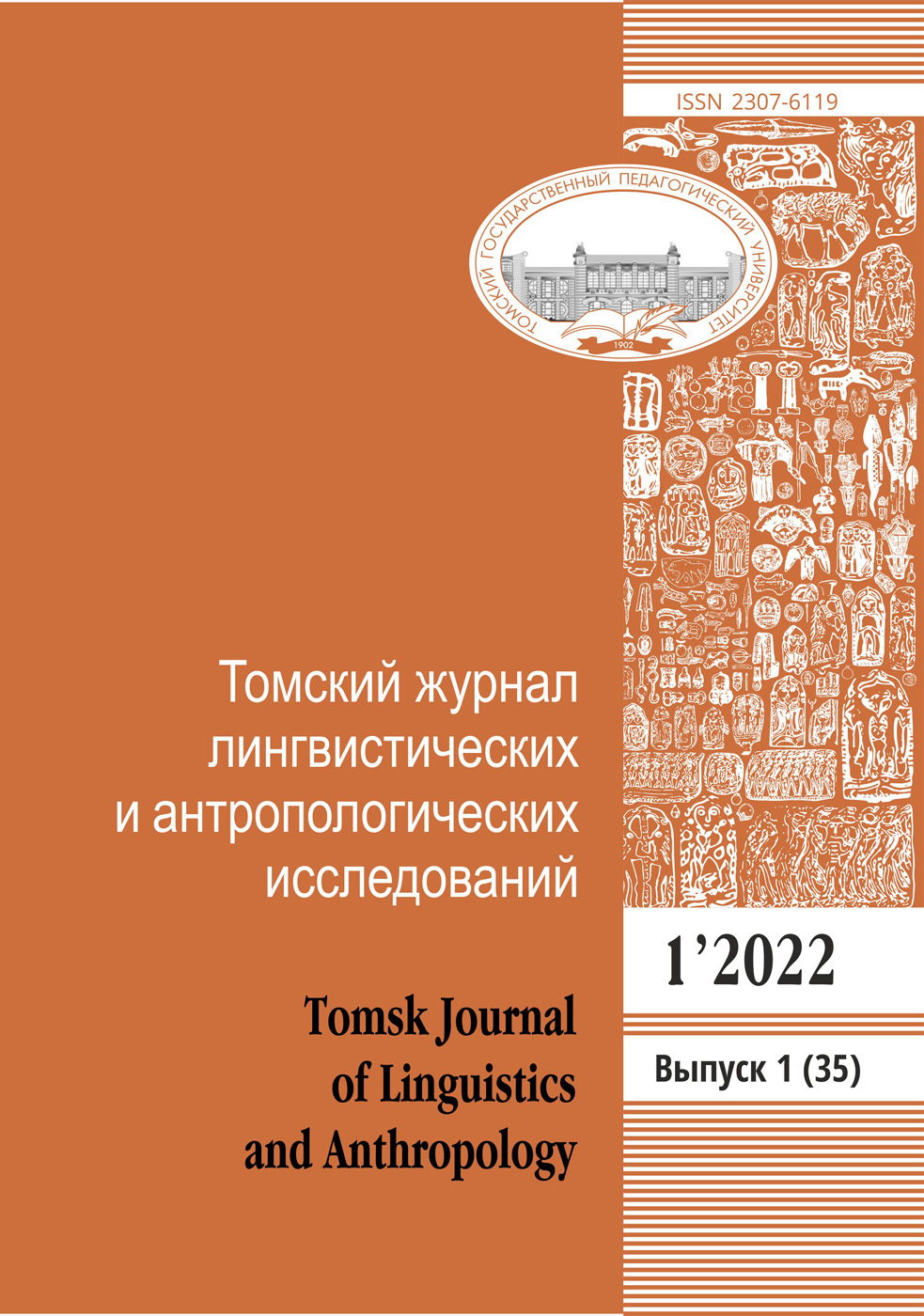Search
| # | Search | Downloads | ||||
|---|---|---|---|---|---|---|
| 1 | Introduction. The study of Russian Old Believer’s dialects is included in modern Russian studies of research problems, as proven by the scientific literature and the subjects of many recent conferences, where the main attention is paid to the lexical problems. Aim and objectives. The analysis of the lexical composition of Old Believer household texts created by one author. Material and methods. The object of the present study were 18 household manuscripts (Paschal diary, various notes, samples of pens and inks, household accounts), written on birch barks and papers in semi-uncial and cursive handwriting. Most of these records were made in the third quarter of the 20th century, presumably by an individual, who is a member of the Old Believer “estates” in the north of Tomsk. The material consists of 733 words (3,367 used). The study uses the scientific description method which includes methods of observation, classification, interpretation, contextual analysis and quantitative counts, as well as linguopersonological elements which include portrait of speech methods and comparative/collation analysis in order to identify gender specificity in the vocabulary of two linguistic personalities. Results and discussion. The analysis showed the vocabulary distribution of the women notes by the author through grammatical classes, their relationship with the types of speech represented in the texts: The description is dominated by nouns and words of the state category, the narrative – verbs of several semantic groups (movement, specific physical actions, etc.), their adverbial actants and the discourse – pronouns, verbs of emotionally-psychological states. The study revealed the most frequent vocabulary for these sources: byt’, den’, yasno, sneg, studeno, etc., as well as words that were used once: apostol, oblachno, usnut’, etc. Semantically, the lexicon of the manuscripts is distributed into two major nominative zones: “World of Nature” and “Human World”, which include a number of sub-zones. The first most representative one of them is sub-zones: “Weather phenomena” (tucha, moroz, syroy, tikhoy zastyt’, dut’, oblachno), “Heavenly objects” (zvezda, solntse), “Elements of the landscape” (ezero, les), etc. The Human World zone includes anthroponymic (Manichka, Stenya, sis, hunter, guest, deushka), somatic (heart, hand), emotive sphere (gore, slezy, neschastnyy, stradat’), industrial (kholst, tkat’, rybka), etc. vocabulary. The nominative zones overlap with each other, as in the Animal World sub-zones (ovsyanochka, los’ – petushok, shchenyata) and Time (noch’, osen’yu – prazdnik, prepolovenie). A separate group is the vocabulary of religious discourse, including confessionally marked (otche, bratets, otluchit’sya). In the aspect of usage, the vocabulary is divided into all-Russian and regional vocabulary. Regional vocabulary includes ethnographisms (morda, cherym), dialectal lexical (malo malo, chayat) and local variants of all-Russian words (suda, vdale, veselyy). A part of the vocabulary shows a commonality with the vocabulary of the diary of the early 20th century, which reflects a different sub-dialect (sinochka, perevalki), and another part is not reflected in the dialect dictionaries at all (nepis, yam). Conclusion. 1. The revealed woman’s lexical resource is characterized by a certain diversity both in terms of its topics and in terms of part of speech, which allows us to consider her linguistic personality (LP) with a high index of lexical diversity of speech. 2. This is a dialectal LP, the lexicon which are marked territorially. In general, they correspond to the lexical subsystem of local priketskii accents with the preservation of their ancestor’s past foreigndialect influence. 3. This personality can be characterized as a religious LP with a confessionally marked vocabulary. Keywords: Old Believers, traditional culture, vocabulary, confessional linguistic personality, eschatology | 843 | ||||





